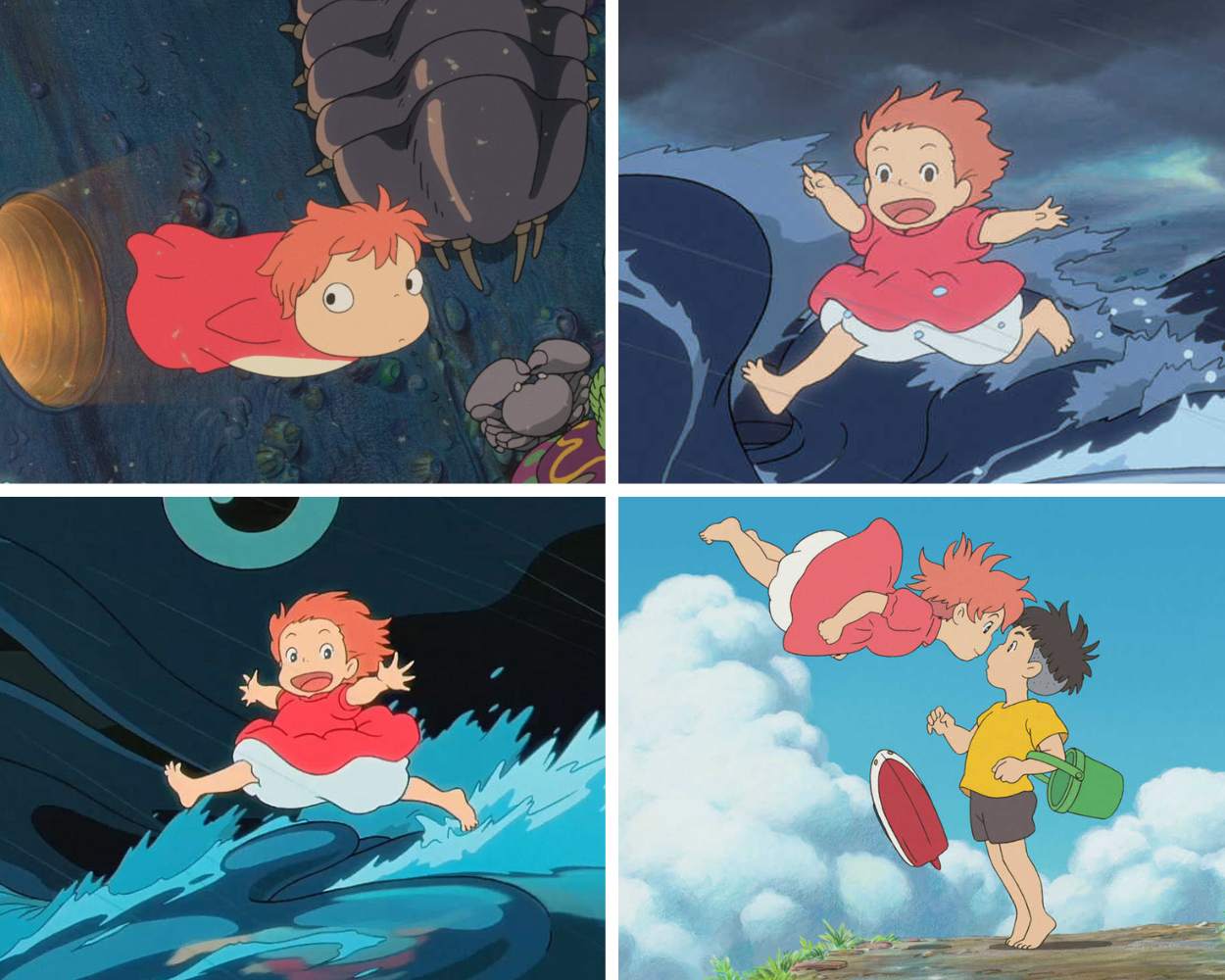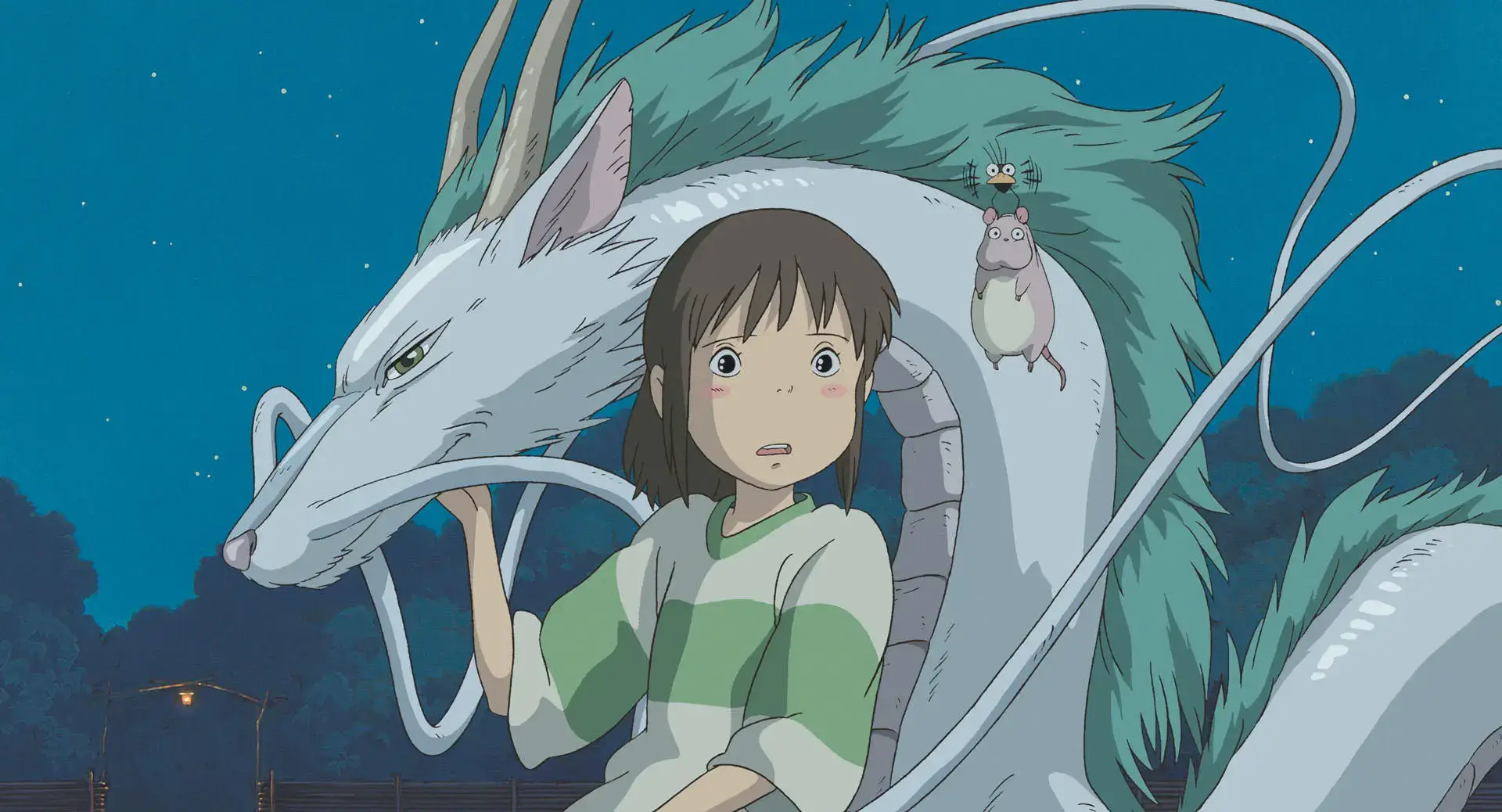Studio Ghibli has gifted us a pantheon of enchanting creatures, from the mischievous Soot Sprites to Kodama and the endearing Totoro.
Whether a wise forest spirit or a whimsical sidekick, each one captivates audiences and takes us on unforgettable journeys through the imaginative realms of animation.
Their stories entertain and resonate deeply with nature, friendship, and discovery themes. Truly, these magical beings are at the heart of what makes Studio Ghibli movies so iconic and cherished.
Cute Studio Ghibli Creatures
Studio Ghibli’s new movie premieres this December, so I thought I would make a list and look back at some of their most popular and memorable creatures.
This list is my favorite and may not be the most popular overall.
Calcifer (Howl’s Moving Castle)

Calcifer is a captivating Fire Demon, bound by a mystical agreement with the enigmatic Wizard Howl. Once a shimmering falling star in the vast cosmos, Calcifer’s descent was fortuitously intercepted by Howl before he could touch the earth and fade away forever.
Despite his formidable power and vast reservoir of magical prowess, Calcifer’s movements are limited. He remains tethered to the hearth where Howl has placed him and cannot venture beyond its boundaries without the wizard’s assistance.
This dynamic relationship is a testament to their interdependence and the intricate web of magic that binds them.
Forest Spirit (Princess Mononoke)

The Forest Spirit, often referred to as Shishigami and Night-Walker, is a mystical being from the tale of Princess Mononoke. Revered as both the deity of life and the harbinger of death, this “Deer God” stands as the guardian of the Cedar Forest.
While it displays its benevolent nature by healing Ashitaka’s bullet wound, it intriguingly chooses not to lift the curse from the boar. As the story unfolds, this enigmatic spirit also claims the lives of Okkoto and Moro.
Kodama (Princess Mononoke) – Studio Ghibli White Creatures

The Kodama, ancient spirits of the forest, had made the woods their home long before the events of the movie unfolded. These white ethereal beings first made their presence known when Ashitaka aided Kohroku and a wounded individual in reaching Irontown.
They made another appearance, silently observing from the canopy and forest floor, as San escorted Ashitaka to the Forest Spirit, hoping to heal his gunshot wound.
However, tragedy struck when Lady Eboshi decapitated the Forest Spirit, leading to the withering of the forest and the demise of many Kodama. But hope was not lost. As the land gradually found its healing touch, a solitary Kodama emerged, symbolizing the forest’s resilient spirit and heralding a rebirth and renewal of life.
Teto (Nausicaä of the Valley of the Wind)

Nausicaä of the Valley of the Wind, despite not always being in the limelight of Studio Ghibli’s illustrious collection, stands as an undeniable masterpiece. Among its memorable cast is Teto, Nausicaä’s endearing fox-squirrel companion discovered early in the narrative.
Sporting vibrant brown and yellow stripes, Teto bears an uncanny resemblance to the imaginative creatures from the Pokémon universe. Though he might not be a mighty behemoth in stature or power, Teto exudes a charm that has many wishing he were more than just a figment of animation, but a real-life magical companion.
Ponyo — Ponyo – Cute Studio Ghibli Creatures

Ponyo, the enchanting goldfish, hails from a unique lineage – a union between a sea goddess and a human – and shines as the central figure in the eponymous film “Ponyo.”
She possesses the intriguing ability to switch between two physical manifestations: her native goldfish state and a human likeness. With the innocent exuberance of a typical five-year-old, she revels in the simple joys of life, such as savoring ham and harboring a tender affection for her friend, Sōsuke.
While Ponyo might not possess the mystique of beings like the soot sprites or the Kodama, and retains her semi-human nature, her magic and charm unquestionably secure her a special place in the pantheon of Studio Ghibli’s wondrous creatures.
No-Face (Spirited Away)

No-Face is a solitary spirit, drawn to Chihiro Ogino by her genuine nature. Instead of using distinct words, he communicates through a series of grunts and moans. Unfamiliar with the intricacies of the Bathhouse and its spirit inhabitants, No-Face learns by observing, absorbing and mirroring those around him.
When exposed to the avaricious tendencies and tainted mindsets of the Bathhouse workers, No-Face began to adopt their characteristics, believing that emulating those in Chihiro’s environment would earn her fondness.
However, this strategy unfortunately led to unintended consequences. Despite these turn of events, Chihiro showed a certain loyalty to No-Face, welcoming him and acknowledging his assistance.
Soot Sprites (My Neighbor Totoro/Spirited Away)
![]()
Soot Sprites communicate not through human languages, but through distinct, high-pitched murmurs that vary with their emotions, be it excitement, frustration, annoyance, or sheer joy.
These magical creatures, as portrayed in the film, risk reverting back into mere soot if they are left without a purpose or task. Though they may not articulate in human tongues, they demonstrate a keen ability to comprehend it, readily following instructions issued by Kamajī.
Howl’s Castle (Howl’s Moving Castle)

In the film “Howl’s Moving Castle,” the eponymous castle belongs to the wizard Howl. Brought to life by the fiery magic of the demon Calcifer, this lumbering edifice moves and operates as if it were a living being, puffing out steam with every step.
The castle’s exterior is an eclectic mix of homes, cannons, ears, and a variety of miscellaneous objects. Inside, the castle boasts a combined living room and kitchen, bedrooms designated for Howl and Markl, and a bathroom.
Catbus (My Neighbor Totoro)

The Catbus, with its purring engine and radiant, yellow-eyed headlights, stands out as one of Studio Ghibli’s most inventive creations. Offering plush seats that adapt perfectly to the passenger’s form and rows of nimble feet that almost give it the ability to soar, it’s no surprise that Mei favors this whimsical mode of transport.
Drawing inspiration from the Japanese urban legend of the “bakeneko,” the myth suggests that cats acquire the ability to transform with age. What truly sets Catbus apart isn’t just its fantastical nature and compassionate heart.
This magical entity consistently comes to the aid of Mei and Satsuki, be it during a rain-soaked evening when their father is delayed, or in the dire moments when Mei goes missing.
Haku (Spirited Away)

Nigihayami Kohakunushi, more commonly recognized by the name bestowed upon him by Yubaba, Haku (ハク, haku), plays the role of the deuteragonist in the 2001 animated classic Spirited Away.
In his majestic dragon form, Haku looks like a pristine white dragon adorned with teal fur, bird-like legs, and elongated whiskers. When in his human guise, he resembles a young boy with jet-black, cropped hair. Though he serves Yubaba, his reasons for doing so are driven by noble intentions.
Totoro – My Neighbor Totoro

Totoro ranks as the most endearing creature across all film genres. A surviving member of the Totoro Tribe, Totoro’s lineage faced the verge of extinction due to age-old conflicts with humans.
Despite the past, Totoro adopted some human practices. From the Jōmon period, he embraced the art of crafting Jōmon pottery, and from the Edo era, he mastered the delicate art of spinning a top.
Mei’s first encounter is with the petite Totoro and its slightly larger counterpart as she stumbles upon their scattered acorns while exploring the house’s yard. Drawn into the dense woods, Mei finds the majestic Totoro deep in slumber. Although initially taken aback by her unexpected visit, the gentle creature allows her to snuggle up and drift into sleep beside him.
List of Characters By Species
Cats
- Cat King
- Baron Humbert von Gikkingen
- Jiji
- Lily
- Prince Lune
- Moon
- Muta
- Natori
- Natoru
- Niya
- Tibs
- Yuki
Catbus
- Catbus
- Cat Liner
Celestial Beings
- Jokan
- Kaguya
- King of the Moon
Demons
- Ashitaka (partially)
- Demon Worms
- Nago (after infection)
- Okkoto (after infection)
Dogs
- Heen
- Jeff
- Koro
Dragons
- River Spirit
- Haku
- Therru
- Kalessin
Fairies
- Drippy
Foxes
- Lin
- Ryutaro
- Hostesses
Fox Squirrels
- Laputa’s fox squirrels
- Teto
Frogs
- Aogaeru
Giant Pandas
- Papa Panda
- Panny
Goats
- Granny’s goat
Macaques
- The Apes
Mice
- Boh (when transformed)
- Cedar Forest’s mice
Pigs
- Akio Ogino (initially human)
- Yuko Ogino (initially human)
- Marco Pagot (1/2 human, 1/2 pig)
Ravens
- Toto
- Yubaba’s Bird (bird part)
Sea Turtles
- The Giant Turtle
Sootballs
- Bathhouse’s sootballs
- Kusakabe’s House sootballs
Spirits
- Aniyaku
- Boh
- Chichiyaku
- Foreman
- Haku
- Kamajī
- Kashira
- No-Face
- Radish Spirit
- River Spirit
- Stink Spirit
- Yubaba
- Yuna
- Zeniba
Raccoons Dogs
- Bunta
- Kinchō Daimyōjin VI
- Gonta
- Inugami Gyōbu
- Yashimano Hage
- Hanako
- Okiyo
- Osho
- Sasuke
- Seizaemon
- Shoukichi
- Tamasaburo
Totoro Tribe
- Big Totoro
- Mid Totoro
- Mini Totoro
Wolves
- Moro
- Moro’s children